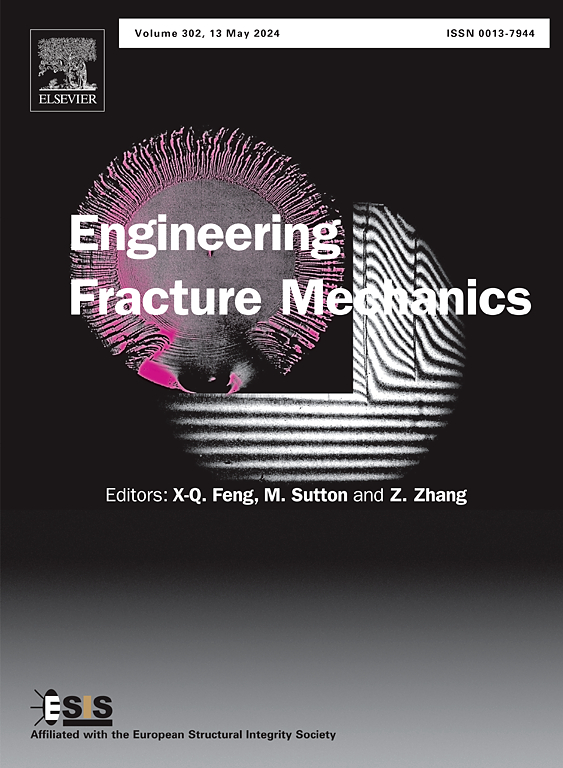基于精确裂纹扩展模型的柴油机缸体疲劳寿命精确评估及初始裂纹效应研究
IF 4.7
2区 工程技术
Q1 MECHANICS
引用次数: 0
摘要
准确评估柴油机缸体隔板的疲劳寿命及初始裂纹对发动机安全性能的影响是至关重要的。然而,这些隔板的大尺寸和复杂的几何形状使可靠的裂纹扩展速率(da/dN)模型的发展复杂化。为了解决这个问题,进行了一项缩放研究,以确保缩放前后的da/dN行为一致。在考虑裂纹闭合效应的情况下,对按比例缩放的构件进行疲劳裂纹扩展(FCP)试验和模拟,获得da/dN和应力强度因子(ΔK)数据,然后将其整合,建立分区的间接da/dN模型。基于该模型对分区进行了Nf模拟评价。此外,采用微观分析和有限元建模来评估初始裂纹条件对FCP行为和Nf的影响。结果表明,该模型以I型为主要FCP模式,与传统方法相比,Nf预测误差降低了10.2%。螺栓根部中心、30°裂纹角和1.4宽高比是导致断裂的关键因素。本文章由计算机程序翻译,如有差异,请以英文原文为准。

Accurate evaluation of fatigue life and study of initial crack effects in diesel engine cylinder blocks based on an accurate crack propagation model
Accurate assessment of the fatigue life (Nf) of diesel engine cylinder block partitions and the influence of initial cracks is essential for engine safety. However, the large size and complex geometry of these partitions complicate the development of a reliable crack growth rate (da/dN) model. To address this, a scaling study was conducted to ensure consistent da/dN behavior before and after scaling. Fatigue crack propagation (FCP) tests and simulations, accounting for crack closure effects, were performed on scaled components to obtain da/dN and stress intensity factor (ΔK) data, which were then integrated to establish an indirect da/dN model for the partitions. Nf simulation evaluation of the partition was conducted based on this model. Additionally, microscopic analysis and finite element modeling were used to assess initial crack conditions’ effects on FCP behavior and Nf. The results show that the proposed model reduces Nf prediction error by 10.2% compared to traditional methods, with Type I as the primary FCP mode. The bolt root center, a 30° crack angle, and a 1.4 aspect ratio were identified as critical factors in fracture.
求助全文
通过发布文献求助,成功后即可免费获取论文全文。
去求助
来源期刊
CiteScore
8.70
自引率
13.00%
发文量
606
审稿时长
74 days
期刊介绍:
EFM covers a broad range of topics in fracture mechanics to be of interest and use to both researchers and practitioners. Contributions are welcome which address the fracture behavior of conventional engineering material systems as well as newly emerging material systems. Contributions on developments in the areas of mechanics and materials science strongly related to fracture mechanics are also welcome. Papers on fatigue are welcome if they treat the fatigue process using the methods of fracture mechanics.

 求助内容:
求助内容: 应助结果提醒方式:
应助结果提醒方式:


